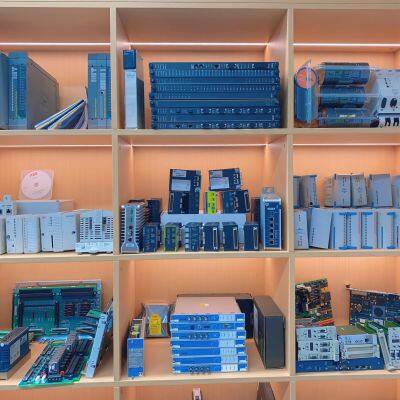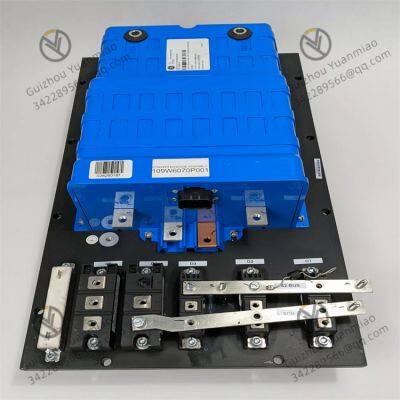Product Description
GE 151X1233DB01SA01R4 Circuit Board Module
151X1233DB01SA01R4 is the GE 30 NM Power Converter ACB AAA Control Circuit Board. The specific working principles are analyzed from the aspects of power input, control logic, and power conversion as follows:
Power Input and Processing: The circuit board usually requires an external input power supply, which can be alternating current (AC) or direct current (DC). If AC is input, it first passes through a rectifier circuit, which converts AC to DC using the one-way conduction characteristic of diodes. Then, it goes through a filter circuit, typically composed of capacitors and other components, to remove ripples from the rectified DC, resulting in a relatively smooth DC voltage to provide a stable power supply for subsequent circuits. In addition, it may be equipped with overvoltage and overcurrent protection circuits. When the input voltage or current is abnormal, it automatically cuts off the power supply or takes current-limiting measures to protect the circuit board from damage.
Control Logic Section: The circuit board may contain one or more main control chips, such as a single-chip microcomputer. The main control chip controls the entire circuit board through pre-set internal programs and algorithms. It receives signals from various sensors or external interfaces, such as voltage feedback signals, current feedback signals, and temperature signals. Based on these feedback signals, the main control chip compares them with pre-set thresholds or target values and then outputs corresponding control signals to adjust the power conversion process, ensuring that the output voltage and current remain within the set ranges.

Power Conversion Circuit: Power conversion is one of the core functions of this circuit board, which may adopt various topological structures such as push-pull, full-bridge, or half-bridge. Taking the push-pull circuit as an example, two power switching devices (such as transistors or MOSFETs) are alternately turned on under the control of signals output by the main control chip. When one is turned on, the other is turned off. Electrical energy is transmitted to the output end through a transformer to achieve power output, converting the input power into the required voltage and current output to supply power to the load.
Feedback and Regulation Mechanism: To ensure the stability and accuracy of the output, the circuit board is equipped with a feedback regulation circuit. It usually samples the output voltage through components such as voltage-divider resistors, feeds the sampled signal back to the main control chip or error amplifier, and compares it with a reference voltage. If the output voltage deviates from the set value, the error amplifier outputs a regulation signal. By changing the duty cycle of the control signal output by the main control chip, the conduction time of the power switching devices is adjusted, thereby bringing the output voltage back to the set value and achieving closed-loop control.
Working Principle of Protection Circuit: In addition to the aforementioned input overvoltage and overcurrent protection, the circuit board may have other protection functions. For example, the over-temperature protection circuit uses a temperature sensor (such as an NTC thermistor) to monitor the temperature of the circuit board or power devices. When the temperature exceeds the set threshold, the control circuit reduces power output or stops working to prevent damage to components due to overheating. The short-circuit protection circuit quickly cuts off the power output when a short circuit at the output end is detected, avoiding damage to the circuit board and other equipment caused by excessive short-circuit current.

Functional Features
Power Conversion Control: It has efficient power conversion capability, which can convert the input power into specific voltage and current outputs to meet load requirements. It can automatically adjust control strategies according to the relationship between input and output voltages and load conditions, providing stable voltage output within the range of input voltage fluctuations.
Wide Input Voltage Range: Similar to other power conversion modules, it may support a wide input voltage range, adapting to different power supply environments, such as common industrial voltage input ranges. It can withstand voltage fluctuations and abnormalities to a certain extent, ensuring the normal operation of the module.
Multiple Protection Functions: To ensure the safety of itself and connected equipment, it is usually integrated with multiple protection functions. For example, overcurrent protection automatically limits the current or cuts off the output when the output current exceeds the set value; over-temperature protection monitors the temperature of the circuit board or power devices and takes measures such as reducing power or shutting down when the temperature is too high; and output short-circuit protection prevents damage caused by short circuits.
Precise Feedback Regulation: Through a precise feedback circuit, it real-time monitors the output voltage and current, feeds the signals back to the control chip, and after comparing with the pre-set values, accurately adjusts the power conversion process to achieve precise control of the output voltage and current, meeting the load's requirements for power supply accuracy.
Industrial-Grade Reliability: As it is applied to industrial equipment, this module may use industrial-grade components, featuring high reliability and stability. It can adapt to harsh industrial environments, such as operating in a wide temperature range (-40℃ - +85℃), resisting vibration and electromagnetic interference, ensuring long-term stable operation, and reducing maintenance costs.
Control Signal Processing: It can receive and process various control signals, such as command signals from external controllers, to realize control over the start/stop of charging or power output, mode switching, etc. At the same time, it may output status signals to indicate the working status of the module, such as normal power supply, ongoing charging, fault alarm, etc.

Application Scenarios
Industrial Automation Field: It can be used in production line equipment in manufacturing, performing power control and driving for power devices such as motors to ensure stable operation of the equipment. It can also be applied in factory automation systems, providing precise power for various automated instruments and meters, participating in process control, and achieving precise regulation of parameters such as temperature, pressure, and flow.
Power System: In the power generation link, it can be used in equipment such as wind power generation and photovoltaic power generation to convert and regulate electrical energy, making it meet the requirements of grid connection. In power transmission and distribution systems, it can monitor and control power parameters, ensuring stable power transmission and improving the reliability and efficiency of power system operation.
Communication Equipment: It can be used in the power supply system of communication base stations to provide stable power supply for base station equipment, ensuring the normal operation of the base stations. It can also be applied in data centers to manage and control the power supply of servers and other equipment, meeting the high requirements of communication equipment for power stability and reliability.

Medical Equipment: For example, in large medical equipment such as CT scanners and nuclear magnetic resonance imaging equipment, it provides stable power for the precision components of the equipment, ensuring accurate operation of the equipment and thus guaranteeing the accuracy of diagnostic results. It can also be used in medical monitoring equipment to supply power for sensors and data processing units, ensuring that the equipment collects and transmits physiological data in real-time and accurately.
Transportation System: It can be applied in traffic signal control systems to provide power and control for equipment such as signal lights and traffic monitoring cameras, ensuring the normal switching of traffic signals and stable operation of the equipment. It may also play a role in electric vehicle charging facilities, performing power control and management during the charging process to achieve fast and safe charging.
Scientific Research Field: In various measurement and experimental equipment in laboratories, it can provide stable power for high-precision sensors and detectors, ensuring the accuracy and reliability of experimental data. For example, in equipment such as particle accelerators and spectrum analyzers, it participates in power control and power conversion, providing support for the smooth progress of scientific research work.



ABB IGCT 5SGY3545L0020 Commutated Thyristor
ABB IGCT Module 5SGY3545L0008
GE 151X1233DB02SA02 Digital Input Module
ABB IGCT 5SHX1960L0005 Thyristor Module
GE 151X1225DF01PC01R3 Digital Input Module
ABB 3BHB016120R0002 Thyristor Module
GE IS200ESERLH3AAA Excitation Control System Module
GE 151X1207BB55SA01 VersaMax Series Industrial Control Module
ABB 5SHX2645L0001 IGCT Module Brand
ABB IGCT Module 3BHL000389P0101
ABB IGCT 5SHY4045L0002 Commutated Thyristor
ABB 3BHB026114R0001 IGCT Commutated Thyristor
 yezi
Hi there! Welcome to my shop. Let me know if you have any questions.
yezi
Hi there! Welcome to my shop. Let me know if you have any questions.






